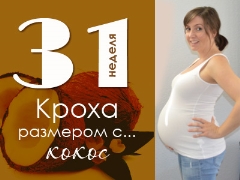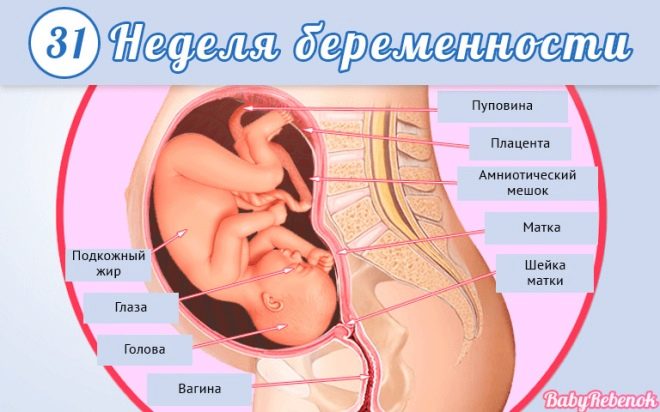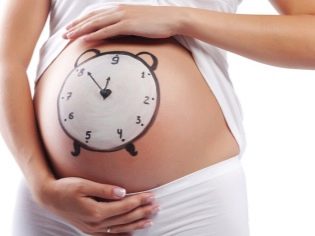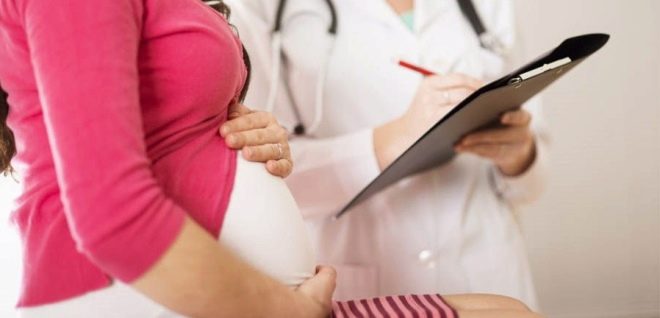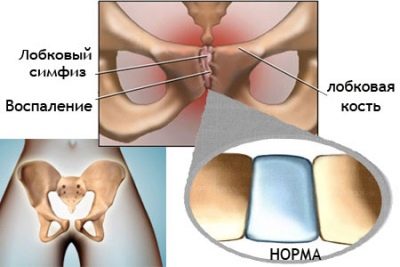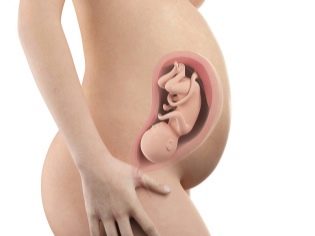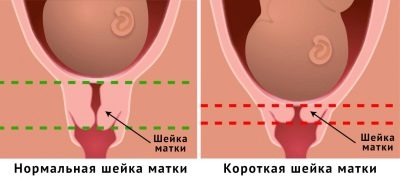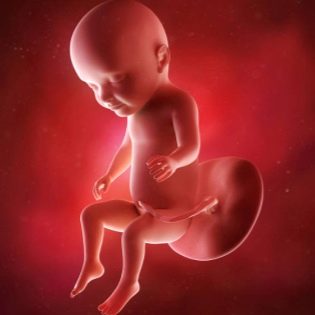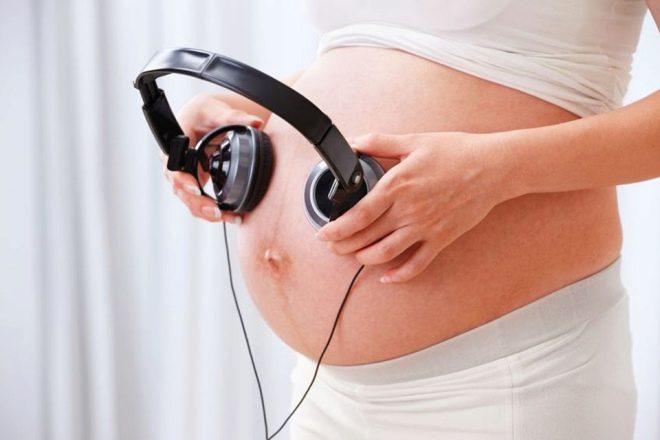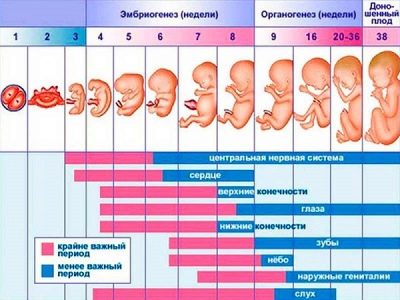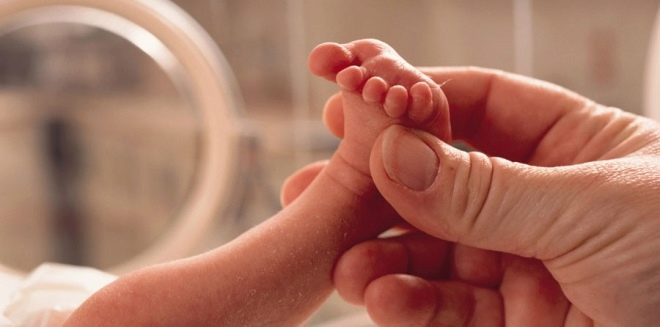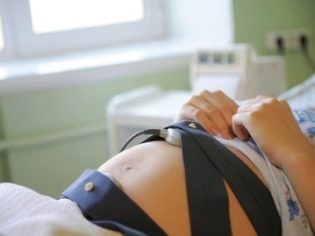31 week of pregnancy: what happens to the fetus and the expectant mother?
A calm and measured period has come. A woman no longer needs to get up early in the morning, to get to work or a place of study, there is no longer any need to hurry. 31 weeks pregnant woman meets at home, she went on maternity leave. Now there is more time for yourself and preparing for the upcoming delivery.
How many months is it
The final - third trimester of pregnancy continues. 30-31 obstetric week corresponds 7 obstetric months and 3 weeks. In the usual calendar time, 7 months have passed. According to the Negale rule, the period of gestation is calculated in lunar months. In each of them - 28 days or 4 weeks exactly.
Week 31 is 29 weeks from conception and 27 weeks from the first day of menstruation. Childbirth can theoretically occur at any time, but there are still about 9 weeks before the expected day of birth.
The date in the exchange card of the future mother does not mean at all that the birth will happen on this day. Only 5% of babies are born in the DA, the rest choose a different time for themselves - before or after the specified date.
Feelings of a woman
By week 31, a woman has time to feel not only all the delights of pregnancy, but also all her troubles. Already there is no former ease, simple daily affairs are given with great difficulty. A woman gets tired faster, various pains can torment her. All body systems begin to “tune in” to early delivery, and everything that happens with the baby and mother at this time is somehow connected with this advance preparation.
Fetal movements
Beginning of 31 weeks is usually marked by a decrease in motor activity of the baby. The child becomes crowded, there is less and less space left in the uterus, now without any problems, the crumbs are given only movements of the head and limbs. Complete coups are already limited by the walls of the uterus, they are almost impossible.
At the same time, the movements become stronger, the woman sometimes feels painful kicks and pokes. If the baby is in pelvic presentation, movements are more often felt in the lower abdomen, and women without any particular difficulties determine where the baby has a head, where the priest is, where the legs and arms are.
The kid obeys his daily routine. Most of the days he, of course, spends in a dream. Waking periods may not coincide with maternal ones. The movements have long ceased to be ordinary movements, now it is the language of communication between mother and her child. The baby begins to move more actively, if he lacks oxygen and nutrition, if the mother has taken an uncomfortable position. Often, babies "knock" on her mother's palm, specially laid on the stomach. By the nature of the movements, the mother realizes her baby's state of health.
The kid shows high meteosensitivity. On clear days it is more active than on cloudy and rainy. Also, his mother's emotions directly affect him. If a woman is happy, she is happy, the baby receives the hormone of joy and is activated. If a woman is sad, worried, in a state of stress, the baby receives stress hormones and reduces activity.
Despite the constrained conditions of existence, the crumb still continues to demonstrate its character. The baby is moving and curious moving in the womb more often and more than calm, preferring to sleep.
All these factors, the woman must be taken into account when calculating the perturbations, which she should do daily at week 31.
How to count the movement?
At week 31, data on fetal movements are recommended to be entered in a special table, which is given in the antenatal clinic. If it is not given, you can draw it yourself or download and print it.
Counting the movements is necessary in order to lay down the most complete picture of the state of the baby, because any trouble immediately reflects on his physical activity.
Often, women make a gross mistake in calculating each movement as separate. Before proceeding to the calculations, it is necessary to remember that one movement is both a single movement and a whole series of movements. If the baby turned over, and then "kicked" his mother with his heels, this is one stir. If the crumb just “kicked” the mother, and no other movement followed, then this, too, is one stir.
For counting, you can use any of the existing methods. Considered the most popular Pearson method, which the people called "Count to ten." Begin counting at 8 or 9 am As soon as the woman mentally fixes the tenth stirring, she notes in the table the time it took, and until the end of the day, she will not return to the counting. If before 21 o'clock, if the counting began at 9 in the morning, or before 20 o'clock, if the woman began to count at 8 in the morning, the baby will demonstrate 10 movements, everything is fine with him.
Cardiff method also quite common among pregnant women. It differs from Pearson only in that the woman chooses herself when to count the perturbations. If her fetus is more active at night, she may well consider movements at night, the main thing is that in 12 hours the baby should also demonstrate 10 movements.
Less common Sadowski method. But they can also be used - both separately and in addition to the method of Pearson or Cardiff. A woman must record movement after eating. If after a tasty dinner for an hour, the kid pushed 4 times or more, there is no reason to worry.
Counting the movements allows the woman to quickly find out that the baby is experiencing difficulties. For example, if there was a cord entanglement around the neck, Rh-conflict entered the active stage, placenta pathologies occurred, hypoxia could threaten the baby. Oxygen starvation is dangerously irreversible processes in the brain: lack of oxygen injures the nervous system of the fetus. Hypoxia is a common cause of fetal death.
If your baby has become very active, his movements become chaotic, frequent, painful and restless, the initial stage of hypoxia is not excluded. With severe and prolonged hypoxia, children, on the contrary, reduce their physical activity in order to “save” oxygen. A woman may not count the necessary amount of movements.
If you deviate from the norm in one direction or another, the woman must be informed about this to your doctor. At this time, his diagnostic capabilities are wider - he can now assign CTG (cardiotocography) in addition to Doppler ultrasound, which will determine the speed of blood flow in the uterine vessels.
With hypoxia, which poses a threat to the life and health of the baby, early delivery may be recommended by performing a cesarean section.
The mood of the future mother
The mood of a pregnant woman at week 31 again becomes hormone dependent. If in the early stages progesterone "dictated" the psychological state, then now estrogens influence the woman's psyche. The closer to the date of birth, the more these hormones are produced in the body.They contribute to increased anxiety and suspiciousness, the emergence of fears.
Most often women this week complain of fear of childbirth. He can be so strong that a woman cannot think about anything else. It would seem that you need to rejoice at the imminent meeting with the baby, but nothing pleases the woman, and the more she reads materials about how childbirth proceeds, the stronger this fear becomes.
This fear is considered normal, and psychologists recommend pregnant women to learn how to cope with it, so as not to darken the last months of pregnancy either to themselves or to a child who already has a subtle sense of mom's mood swings. In addition to the fear of possible pain, women guess at the state of the child. Even if the ultrasound showed no abnormalities, every expectant mother sometimes has the idea that she can give birth to a sick baby.
In addition, women in the third trimester worry about the relationship with her husband, because from the waist almost nothing is left, and the clumsiness and gained weight do not contribute to active and easy sex. Women are afraid to give birth ahead of time, do not get to the maternity hospital, they are afraid that they will be given a cesarean section. All fears can and must be fought.
Psychologists recommend not to read about complications and difficulties during childbirth, to stop communicating with people telling about their or others negative experiences of childbirth. Instead, it is better to focus on the pleasant - buying baby clothes, toys, strollers and cribs. And to prepare for childbirth without unnecessary nerves will help experts in courses for pregnant women, where it was time to enroll, if this has not been done before. They will teach you to breathe and to push, they will tell about the first signs of labor activity.
If, at week 31, a woman cannot cope with her emotions, anger covers her, she is excessively tearful, you can consult with a psychologist who accepts free of charge at any antenatal clinic.
Pains
Weak pain is considered perfectly normal for this period, because the uterus has become large, the ligamentous apparatus is stretched, the load on the spine, muscles, lower limbs is increased. Such pains do not indicate the beginning of childbirth and you just need to accept it, because now they are unlikely to leave a woman until the moment when the baby is born.
On the beginning of preterm labor at week 31, these symptoms indicate:
- cramping pain in the lower abdomen, increasing with time, repeated at regular intervals of time;
- rupture of amniotic fluid;
- the appearance of bloody discharge from the genitals.
All other pains are considered physiological and should not greatly disturb a woman. The displaced center of gravity due to the large abdomen causes tension in the ligaments, muscles, and lumbar spine. As a result, back hurts, pulls the lower back. The longer a woman is forced to be in an upright position, the more pain becomes. But they are not of a sharp nature; rather, they can be described as dull and aching.
In the body of a pregnant woman a few weeks ago, relaxin was produced. This hormone relaxes and softens the ligaments and bones of the pelvis. So small pelvis preparing for childbirth. These processes lead to the fact that the pubic bone hurts.
Discomfort will have to suffer. But if the pain in the perineum becomes acute and unbearable, if between the legs it hurts so much that a woman cannot sit and stand, walk, climb stairs and roll over from side to side, you should definitely consult a doctor. So manifested symphysitis is a dangerous complication primarily because the natural childbirth can lead to disability of the woman. Often, when a symphysis is established, a cesarean section is performed.
Night leg cramps - a consequence of a lack of calcium in the maternal body. Bone skeleton of the baby continues to grow, the bones are strengthened. For the same reason, a woman can become brittle nails.If a tooth has started to hurt, you can now go to the dentist's office: most painkillers are already allowed. True, the treatment is complicated by the inability to take a x-ray of a tooth.
Loss in the knees and ankles at week 31 is a natural consequence of a considerable weight gain.
Headaches are associated with a large load on the vessels and the heart, as well as differences in blood pressure.
If your head hurts strongly and often, you should definitely consult with your doctor, because hypertension, like hypotension, are not the best companions of pregnancy in its third trimester.
Nature of discharge
Discharge from the genitals - a special, sensitive topic of conversation. At week 31, there may be more of them, and there will be nothing pathological in this. Under the action of estrogen, the vaginal secretion becomes more fluid, abundant, but normally it remains light or slightly yellowish, odorless or with a weak, fermented milk smell.
If the amount of discharge worries a woman, you can use thin daily sanitary pads. Tampons for pregnant women are strictly prohibited. for the vaginal secretion must come out and not accumulate in the genital tract.
If the discharge has changed and has become white and thick, itchy crotch, the woman should definitely see a doctor - thrush, although it is a frequent illness during pregnancy, should be treated completely by the time of delivery.
Spotting can talk about the beginning of preterm labor, placental abruption. You can not hesitate, you should immediately call an ambulance.
Green or grayish-dirty discharge with an unpleasant fishy smell is a sign of a bacterial infection. If watery discharges appear, water may have escaped. The complete discharge of water is difficult to confuse with anything else, but their partial leakage can remain unnoticed for a long time.
Changes in the body
Sometimes a woman at week 31 may feel that her stomach does not grow any further, but this feeling is subjective and erroneous. The stomach continues to grow. The gait of a woman becomes hard. It is difficult for her to put on shoes on her own, it is almost impossible to bend to pick up something from the floor.
Uterus growth
The uterus has increased to the size of a large basketball. The height of the uterus at 31 weeks is in the range of 29-32 centimeters.
The length of the cervix in the norm is more than 30 centimeters. The short cervix may indicate the threat of premature birth, because the baby is already heavy and weighs on the neck with all the weight from the inside.
The shortened cervix at this time requires constant monitoring. If earlier a woman had surgical sutures or an obstetric pessary, then she needs to visit the doctor once a week to notice possible signs of early cervical dilatation in time. Some are shown to stay in the hospital.
From this period, the uterus will somewhat slow down its growth. Now the baby is actively growing, it occupies almost the entire inner space of the uterus. Closer to the clans, the height of standing at its bottom will begin to decline altogether, because the baby will begin to descend, to occupy a “pre-launch” position, with the head tightly pressed against the exit of the small pelvis.
Above the navel line, at 31 weeks, the uterus rises by almost 11 centimeters. From the pubic symphysis to the upper edge of the uterus - more than 30 centimeters. The uterus weighs about 700 grams. A woman becomes hard to breathe, she constantly lacks air, because the reproductive organ squeezes the diaphragm.
Shortness of breath and dizziness, which occur with little exertion, are considered perfectly normal for this period.
The internal organs of the woman are crushed and displaced. The uterus puts pressure on the stomach, which is why a woman often has heartburn. Compression of the gallbladder leads to disruption of the outflow of bile and diarrhea, nausea.
Loops of the intestine, shifted back and squeezed by the uterus, cause constipation and increased gas formation.The pressure of the uterus on the bladder causes frequent urination. At 31 weeks, there may be unpleasant "surprises" - coughing or sneezing, laughter can cause an involuntary urine leakage in a woman.
At the planned reception, the doctor must measure with a centimeter tape the height of the uterus and the distance between the pelvic bones. If the uterus grows at a slower rate, the doctor may suggest intrauterine growth retardation. Advance VSDM - a sign of large fruit, as well as polyhydramnios.
Weight gain
Weight gain to 31 weeks on average is 11-13 kilograms. And this weight consists of the mass of the mammary glands, uterus, fetus, placenta, amniotic fluid, as well as the increased amount of blood in the woman's body.
The increase may be more or less. It all depends on what kind of lifestyle a woman leads, how she feeds, and also on how her body was built before the onset of pregnancy.
- By week 31, thin girls who have had a small body mass can gain up to 12.3 kilograms.
- Women with a normal physique and no problems with overweight - up to 10.5 kilograms.
- Women who have extra pounds or had obesity of varying degrees - no more than 7 pounds. A weight gain of 400 grams per week is considered normal.
Overweight complicates the process of childbirth and does not contribute to the rapid recovery after them. All women know how difficult it is to get rid of extra pounds afterwards. But the most dangerous are considered not to exceed the norm of weight, and its sharp jumps - per kilogram per week or more. They can be a sign of developing preeclampsia - late toxicosis.
The disease often develops in pregnant women with firstborn, in women over 35 years of age, with multiple pregnancies, but in other women such complications are not uncommon. If the swelling is external, the woman herself notices them. But the most dangerous swelling is internal. It is they who sometimes show jumps in weight.
If you do not have floor scales in your home, it's time to get them. It is not necessary to weigh each day, it will be quite enough to carry out weighing once a week on the same day, for example, on Thursday or Tuesday.
Weighing will take place in the doctor’s office at each scheduled appointment. If your data differs from the weights in the gynecologist's office, take your notes with you to the doctor to see them.
Training bouts
Most women in the 31 week are training fights. They manifest a small tone of the uterus, the woman feels that pulls the lower back, lower abdomen. Such contractions in some pregnant women occur once a week, in others - every day. There are women who often experience false contractions, and there are those who do not experience them at all.
To the question how many training bouts should be normal at this time, no one will answer, because there are no norms in their attitude. They do not affect the opening of the cervix, does not bring the day of birth closer, and they are called training rather conditionally.
The fact of training the muscles of the uterus is not proven, because for women who have not experienced any training contractions during pregnancy, they give birth to none other than those who had false contractions all the time.
Another common question is how long before labor such contractions appear. In primiparous women, false contractions are manifested earlier than mothers with experience and experience. In pregnant women with second or third babies, training bouts most often start for the first time just before delivery - within a few days or even hours.
Other changes
The breast of a woman in her 31st week of pregnancy is impressive in size and shape. It can manifest bluish mesh of blood vessels. The breast looks poured, colostrum can start to stand out from the nipples. This nutrient fluid precedes the formation of breast milk.
Women who have previously breastfed may have more colostrum due to weak nipples and dilated ducts. Right now you need to pay special attention to the nipple hygiene - rinse the mammary glands with warm water two or three times a day, not squeeze the colostrum. If you are worried about his leakage, you need to use special bra inserts that will prevent stains on clothes and underwear.
The pigment spots on the skin, if they appeared earlier, persist and will not disappear anywhere until the postpartum period. But new spots will not be formed at this time. Nevertheless, a woman should rarely be in open sunlight, because her skin is now extremely sensitive to the effects of ultraviolet radiation.
The probability of an allergic reaction increases, and therefore you should not use new cosmetics, untested brands.
A woman may notice that vision is slightly reduced. This is a natural consequence of changes in blood pressure in the intraocular vessels. It is not necessary to treat such myopia, it is considered physiological and passes on its own after childbirth.
Most women emphasize that at week 31, insomnia begins to torment them. It is very difficult to choose a comfortable position for a night's sleep, because among the variety of positions a woman has a poor choice - either her right side or her left.
Fetal development
Baby on the 31st week of pregnancy looks quite formed and ready for birth. Of course, he is still thinner than full-term babies, but in general he is very similar to the newborn.
In size, the crumb resembles a large melon. His height is now in the range of 40-42 centimeters, and weight - up to 1600-1800 grams. Boys are a bit heavier than girls.
In appearance hereditary features are already well traced: the baby can be tall or short, plump or thin.
The position of the fetus at the 31st week of pregnancy is in most cases what it will be at the time of delivery. If the crumb is sitting on the priest in a pelvic presentation or is across the uterus in a transverse presentation, the doctor will advise the pregnant woman to have a special gymnastics and standing in the knee-elbow position, so that the baby has the chance to turn right. This probability still exists, but it is small. If the crumb does not unfold, then 1-2 weeks before the expected date of birth, a planned cesarean section will be prescribed.
The overwhelming number of babies are now in the correct position - head. Their head is still high above the entrance to the pelvis, if the head at 31 weeks begins to fall, doctors say a high probability of preterm birth.
Appearance
The kid stopped was red. His skin acquired a delicate pink hue. The skin thickened, a layer of subcutaneous fat appeared. So far, it is not as much as it is necessary for the baby’s body to be able to independently retain heat in conditions outside the mother’s womb, but not so little that the crumb looks thin.
The skin is smoothed, and all the folds and wrinkles that made the baby look like a wrinkled old man gradually disappear. Quite pretty and plump cheeks appear, legs and handles have recovered, the tummy grows and there is already a small butt.
If the baby is destined to be born a burning brunette or a brown-haired, now his hair begins to darken, a pigment is formed that dyes them. Eyelashes and eyebrows have grown, all facial features have fully formed.
If the baby is destined to be born with dimples on his cheeks, then believe me, they already exist. The auricles become harder and almost stop sticking out. However, the cartilage tissue is still quite soft. If the baby is now born, it is by the degree of softening of the ears that the doctor will judge the degree of his prematurity and immaturity.
The pose in which the baby is now is the only possible one.Taking into account that he felt cramped in the uterus, he took a flexion position, put his legs to his tummy, brought the handles to his stomach, and his chin - to his chest. This position allows the baby to "save" a place in the uterus. The proportions of the body are leveled, the head has almost the right shape, the legs are longer than the arms. At week 31, the process of getting rid of lanugo - blond hair covering the whole body and holding the original lubricant - is in full swing.
Lubrication itself is also becoming less. Soon it will be preserved only where mechanical rubbing is possible: in the groin, under the arms, in the elbow folds on the hands, in the popliteal ones - on the legs and under the chin.
If you look at the baby on a three-dimensional or four-dimensional ultrasound, then at the 31st week of pregnancy it will be possible to say with great accuracy what he looks like, besides, the crumb will surely show a lot: he already knows a lot.
Development of the nervous system
The process of differentiation of the cerebral cortex at week 31 comes to an end. Furrows and crust of the crust are almost formed. Now in the first place are the processes of formation of neural connections.
The electric potentials of the brain at week 31 are not only recorded, but also become quite regular.
About a quarter of a million neurons are formed per minute, and each of these nerve cells has its own application. The neurons underlie all the processes that take place in the nervous system, the basis of all the reflexes that the crumb has already acquired and is gaining these days.
The baby has sucking and swallowing reflexes, a grasping reflex is developed, it can react to touch on the skin, it is pushed off by legs from obstacles. By the 31st week the respiratory reflex is almost formed, the baby’s chest makes breathing movements, although there is no full breathing yet.
The eyes distinguish light and darkness, the baby knows how to squint, blink, he has a reflex photosensitivity. The brain takes control of not only the motor functions of the body of the baby, but also the organs of his senses.
The kid reacts to loud noises from the outside. The baby has already become accustomed to the internal sounds (mother's heartbeat, breathing, etc.), but the external sounds that reach him frighten him.
Internal organs
The internal organs of the baby are fully formed and now they are only growing and increasing in size. The small heart is most developed, it began to work one of the first at 5-6 weeks of pregnancy and now provides all the organs and systems of the baby with blood, pumping more than 20 liters of blood per day.
About half a liter of urine per day is produced by the kidneys of the child. The digestive organs practically “rehearsed” the interaction. The intestine is regularly shrinking, villi appear in it, the accumulation of the original calon "meconium", which consists of lanugo particles, epithelial cells and bile impurities, which enter the intestine, continues. Due to it, meconium has a dark green, almost black, color.
Maturation of lung tissue continues. Small hollow vesicles-alveoli accumulate surfactant. This substance after the birth of the baby will not allow the alveoli to stick together and provide an opportunity to breathe on their own. An insufficient amount of surfactant after birth can cause the development of acute respiratory failure and death of the child.
Viability
Children born at week 31, overwhelmingly survive. They are already quite viable, although they can not boast of greater weight and height at birth. The baby, who will be born on the 31st week of pregnancy, will definitely need the help of doctors.
A premature baby can not effectively retain heat, he often has problems with independent breathing. That is why such babies are placed in reanimation incubators, in which there is oxygen supply, feeding through a probe, and the necessary temperature and humidity are maintained.
The task of the doctors is to help the child grow up to 2 kilograms. A child with such a weight no longer causes fear among doctors; he retains heat well, eats, breathes. After it succeeds, a woman will be discharged home under the supervision of a district pediatrician and a neurologist, because premature babies often have problems with the nervous system.
Baby on ultrasound
The planned third ultrasound scan is usually scheduled for a period of 32-34 weeks, and while there is still time before it. There is no compulsory ultrasound examination at week 31, but it may be given to a woman with a severe obstetric history, isthmic-cervical insufficiency, and risks of premature birth. In all other cases, an ultrasound scan can be performed at will of the expectant mother in any clinic that provides such diagnostic services.
If a woman wants to find out or clarify the sex of the baby, then no one can guarantee for the accuracy of the “prediction” at this time. The pose in which the crumb is now makes it difficult to review its genitals. That is why it is believed that second trimester is the best time for sex determination.
In addition to assessing the thickness of the placenta, the amniotic fluid index, the number of vessels in the umbilical cord, fetal metric is of diagnostic importance. It is precisely according to the length of the bones, the size of the head and the abdomen that the doctor makes a conclusion about the conformity of his development with the terms.
Fetal norms for fetus at 30-31 weeks of pregnancy
BPR, mm | LZR, mm | The length of the femur, mm | The length of the bones of the tibia, mm | Forearm length, mm | The length of the humerus, mm | The diameter of the chest, mm | Head circumference, mm | Abdominal circumference, mm |
78-82 | 97-102 | 57-60 | 53-56 | 46-49 | 53-56 | 79-82 | 285-294 | 264 – 275 |
The internal organs of the baby are well visualized, the doctor can examine each and draw conclusions regarding the absence or presence of defects in their development.
Hazards and Risks
The probability of preterm birth at week 31 is estimated at about 7%. It is higher in those women who put themselves under physical exertion, are in a state of severe stress, smoke and consume alcohol.
The risk of having a baby early is higher for those who have twins or triplets, as well as for pregnant women over 35 years old. To reduce the tone of the uterus, a woman is prescribed "No-Shpu" or "Papaverine". Both of these antispasmodics reduce the tone of the smooth muscles of the uterus.
Another danger 31 weeks of pregnancy - reduced immunity. From the very beginning of the pregnancy, the immunity of the woman is suppressed, so that the embryo has the opportunity to develop and grow in the mother's womb. By week 31, the natural protection of the female body is so weakened that any virus and bacterium poses a real danger to it.
If a woman now suffers from flu or ARVI, chicken pox or another infection, it will not cause much harm to the child: it is protected by maternal immunity. He has already begun to develop his own immune defense, although she is still very weak.
The placenta is a barrier. But it is she who can suffer in case of high temperature. Therefore, treatment of a cold or a viral infection, a runny nose, or a sore throat must necessarily be under the supervision of a physician. Self-medication is now more dangerous than the disease itself.
At the 31st week of pregnancy, due to the heavy load on the lower limbs and the pressure of the uterus on the vena cava, circulatory disorders can occur, which lead to the development of varicose veins and hemorrhoids. These unpleasant illnesses should also be treated only by means authorized by the doctor. Pharmacies sell many venotonics and hemorrhoids, but not all of them are shown to pregnant women.
Analyzes and surveys
At the 31st week of pregnancy, most women undergo CTG for the first time. Cardiotocography is done in female consultation. Two sensors attached to the belly of the future mother, for a certain period of time (at least half an hour) record the baby's movements, the tone of the uterus and the baby's heartbeat.
The results allow us to draw conclusions about the state of the baby and his well-being.If the pregnancy is difficult, the doctor may conduct CTG from this week every week or every other week. The number of surveys individually.
If this week is scheduled routine intake, then the woman must pass an urinalysis. Protein in the urine at this time can talk about the development of preeclampsia. A blood test is not scheduled for week 31, because his expectant mother would have taken a week earlier when drawing up documents for maternity leave. If a woman has normal hemoglobin, the glucose level is not exceeded, the next blood test will be taken before delivery.
Recommendations to the future mother
Recommendations in the 31st week remain standard: the woman is shown walks in the fresh air, balanced nutrition and rich in vitamins and microelements, weight control, a moderately active lifestyle. Separately, you can note the following useful tips.
- Wear a supporting orthopedic antenatal bandage. It will help reduce the load on the spine, back muscles, lower back and legs.
- If your legs and arms are swollen, reduce the amount of salt in your diet, do not drink large amounts of liquid just before bedtime.
- Sex is not contraindicated unless the doctor has a different opinion on this matter. Orgasm helps to prepare the uterus muscles for childbirth, while male sperm contains prostaglandins, which help the cervix to mature. Sex should be gentle and poses safe.
- A flight at 31 weeks gestation is possible, but a woman should definitely discuss her travel plans with a doctor. From him you need to take a certificate with the seal of the medical institution: it is required in all airlines after 28 weeks of pregnancy.
- To quickly deal with a headache, a woman needs to lie down and relax in a darkened room, which is well ventilated. Reduce night pain in the pubic bone will help sleep with a special pillow for pregnant women.
- Pruritus in the hips, abdomen, chest - a sign of overstretching of the skin. If your abdomen and thighs are itching at week 31, the navel hurts, you can use warm vegetable oil. His neat movements rubbed into itchy areas after taking a shower.
- Do not neglect the opportunity to attend courses for expectant mothers, they work with each antenatal clinic. You can do this together with your spouse: it will also be useful for the future father to learn how to care for the newborn and how you can help your wife in the early postpartum period.
Pregnant Reviews
At the 31st week of pregnancy, many expectant mothers think about losing weight, if it is more than normal.
From this period, you can arrange a fasting day, during which a woman will take only cottage cheese, fermented milk products or buckwheat porridge without butter and milk.
Many this week complain that there is no appetite. This mainly affects women carrying large babies, because the uterus severely squeezes the digestive organs and causes symptoms of indigestion.
Many people continue to buy children's things and toys this week: it sets women in a positive way and lets you think about what is good. Women who do not consider the advance purchase of a children's dowry a bad omen have recently become more and more.
Future mothers note that at week 31, their state of health improves slightly, and this is attributed to going on maternity leave and the opportunity to relax more and do what they want.
About what happens to the fetus and the expectant mother in the 31st week of pregnancy, see the following video.
